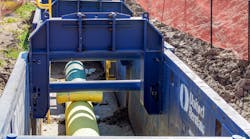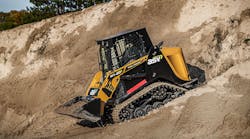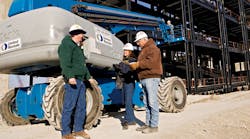Equipment Rental Declines 2 Percent in Q3, Baird/RER Equipment Rental Survey Respondents Say
Equipment rental activity declined 2 percent on a year-over-year basis in the third quarter of 2020 compared to the third quarter of 2019 for respondents to the Baird/RER quarter equipment rental survey. This was an improvement compared to a 9 percent year-over-year dip in the second quarter for survey respondents.
Based on qualitative commentary, while the third quarter benefited from a catch up from projects delayed in the second quarter because of COVID-19, other headwinds are impacting rental demand in the seasonally slow portion of the year. Rental rates are eroding, and fleets are contracting, which is setting up the next couple of quarters for a more difficult environment compared to the third quarter. However, survey respondents are not expecting much sequential decline.
Average rental revenue dropped 2 percent in 3Q20, up from a 9.4-percent decline in 2Q20. Revenue improved each month. Average rental rates decreased 3.1 percent year over year in 3Q20, compared to a 1 percent decline in the second quarter and a 0.2 percent drop in the first quarter, and 1 to 2 percent grown each quarter of 2019. Decreased fleet sizes are not offsetting slower demand caused by COVID and oil and gas, resulting in greater competitive pressures, especially for smaller rental companies.
Fleet utilization was 63.6 percent, a 500-basis point increase compared to the second quarter of 2020, but down 200 basis points from the third quarter of 2019. The year-over-year decline was sharpest for access equipment.
Respondents suggest fourth quarter rental revenue will decline similarly to the third quarter with comparable rate decline. Respondents expect 2021 rental revenue and fleet spending to be modestly higher in 2021. Respondents predict that second half rental revenue will be down 2.7 percent year over year, similar to the third quarter drop. Second half rental rates are expected to decline 3 percent, also similar to the third quarter decline.
Respondents expect their fleet spending to be flat during the next six months, with earthmoving equipment spending flat and access equipment expected to be down 4 percent.
Taking an early look at 2021, two-thirds of respondents expect revenue to be higher in 2021 versus 2020, rising 3 percent on a weighted-average basis. Sixty percent of respondents expect to increase fleet spending in 2021, up by about 5 percent. And two-thirds of respondents expect the size of their fleets to be lower at the end of 2020 compared to 2019.
Here are some selected comments from respondents:
· COVID-19 is still playing a huge factor. People don’t seem as willing to pull the trigger with the pandemic and election happening. Seems like it will be a steady but mildly slow rest of the year.
· Oil & gas markets continue to be very weak. Most other markets have been fairly strong, due to ongoing jobs/projects. Weakness projected into the winter months as we are hearing of job deferrals.
· The election has a lot of projects and customers in a wait and see attitude.
· In most markets, things are flat to slightly up. Still seeing lots of worry and caution by many contractors. Rental rate pressures are everywhere, and each job is getting a lot of attention from all competitors. Everyone is fighting for every rental. 2020 appears to be a "lost year" in regard to growth for many in our industry, but overall it is better than we had feared earlier in the year.
· Significant market oversupply. Nationals have a lot of equipment sitting and [we are] starting to see some irrational pricing.
· The large rental companies are discounting a lot and putting downward pressure on rates.
· Our market remains stagnant as a result of oil & gas decline, we are moving equipment to metro markets in the large cities close to our area to try to increase utilization.
· Indoor scissor lifts rentals are slow, outdoor booms and towable booms are busy.
· 2020 has enjoyed increased specialized rental product utilization into the 80 - 100% range. This has caused challenges as spending freezes have caused frustrating losses due to such high utilization. Some of these products typically see a healthy nationwide utilization of 60-80% depending on the region. Losing an order here or there is much easier to stomach than it is to watch thousands in revenue not happen. This is further exacerbated by the fact that lead times for many specialty items are pushed out because of Covid and other reasons. The primary drivers for this increased demand are the fires in the West, grid instability and storm & hurricane activity. Hopefully this year’s hurricane season will prompt customers to take contingency planning seriously in 2021 as many became complacent in 2020.
· Energy exploration business still very weak. Some big non-res construction projects that were on hold have been released, but others are still on hold.
· Election causing a pause in capital expenditures.








